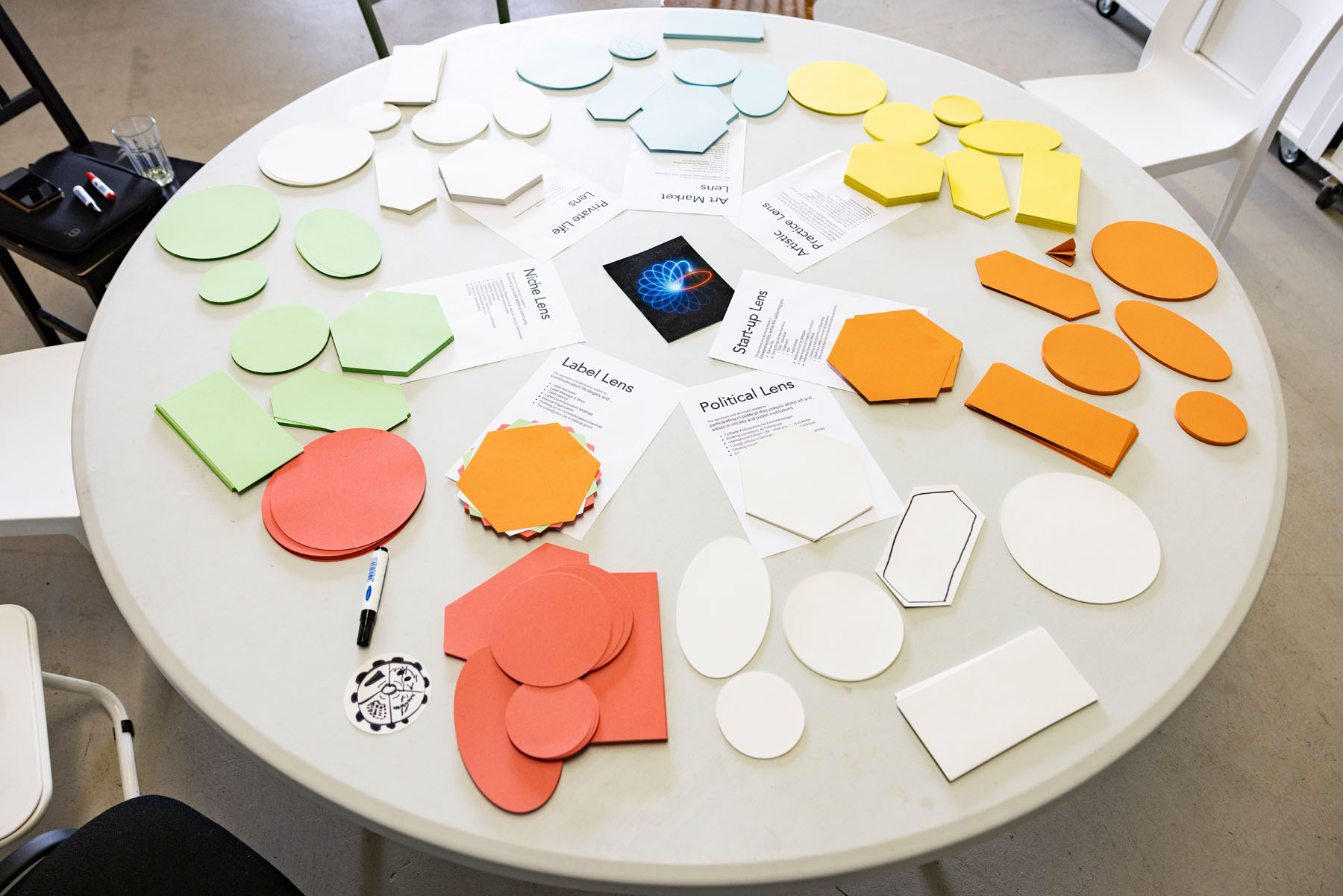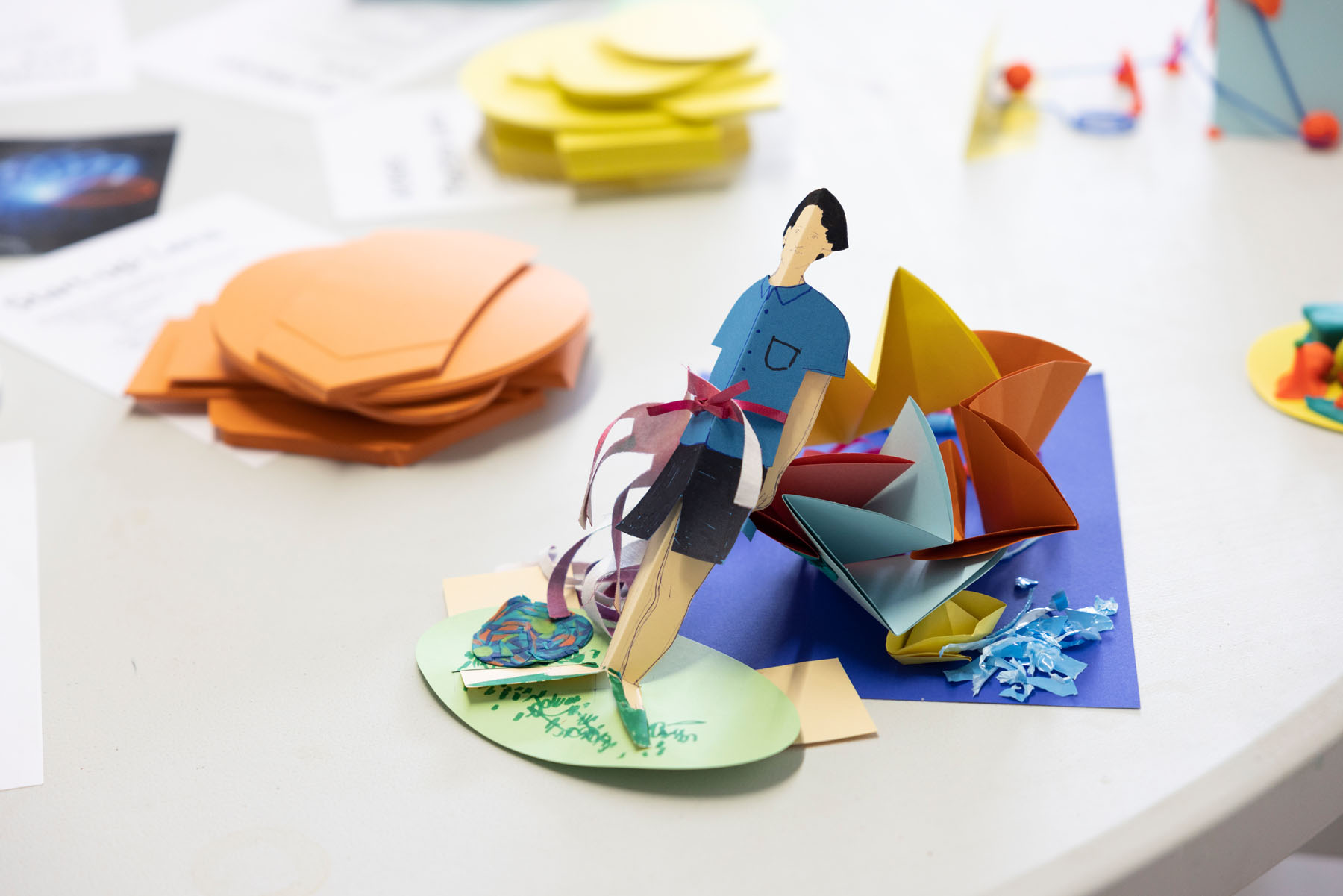Tools
The artistic work develops within a complex grid of different life aspects coming together, some are directly related to our actions and decisions, others might have absolutely nothing to do with us.
We work hard to develop our awareness, though, the more aware we are, the more we perceive and learn. And the more we learn, the more we might end up not knowing what to do next, where to keep on going, who to ask for support.


A curated collection of checklists, workbooks, links and contacts that can support your artistic development. Using these tools is just a step in-between, the actual work happens outside this website, so find something helpful and then close your browser and start with the next simple thing to do.
What is it?
To navigate the collection, we have created a structure based on perspectives.
The perspectives are like lenses, they suggest focusing from a specific viewpoint while searching for information and working on an idea. These 11 perspectives are like roadmaps, 6 correspond to actions and 5 correspond to roles. Of course, they overlap and there are way more perspectives to consider, these are just a starting point.
These perspectives are also used for the archive of conversations between February and November 2021, an essential part of the process of assembling this collection.
For whom can it be helpful?
These tools are useful for dance artists who are working on sharpening their knowledge about artistic processes, from a holistic point of view. If everything is related to everything, where to continue? It can help you to either find new information, to bring focus and depth on what you already know, or to approach a specific situation from different angles.
The online material is selected according to its relevance for freelance dance artists in NRW: dancers, choreographers, project initiators and dance disseminators in the independent dance scene.
How to use it
You can jump around the material, clicking through the tools using the different links until you find something interesting, but we suggest a dive in.
Clarify your intention: Before you start using the website, choose a situation or a question you are dealing with, even better if you write it down.
Choose a perspective: Then select a perspective from which you want to address this situation or question. Read the description and take some time to think about your situation or questions exclusively from this perspective, write down some thoughts to help articulate them. Each description includes some example questions and a suggestion for a tool to start with.
Navigate the tools: Dedicate some time to navigate through the tools in this website and follow threads that could take you somewhere else. If you start feeling lost, return to the intention and the perspective you chose before starting.
Find the next step: The aim is to find a specific next step or action to approach your question or your situation. Maybe you find an important decision you must take in order to go on. Or maybe you find a specific person to contact, or maybe you find some reading material. So take that next step: decide and do, contact someone, or keep learning about a specific matter.
Keep asking questions: After you are done with the website, at best close your computer for a moment and write down the specific next thing you are going to do, and if there are other thoughts or questions wandering around your mind, write them down. They can guide the next search for further steps.
Credits – Silvia Ehnis Perez Duarte, Inspired by the “Game Design – A deck of Lenses” by Jesse Schell
Perspectives
#create
This perspective has to do with your artistic practice, the questions and decisions about your individual approach and your “handwriting”.
#findyourniche
In architecture, a nice is a separated area in a room for something specific, in business jargon it is a specialized part of the market.
#connect
This perspective deals with the process of connecting to the complex network of people that are directly or indirectly related to the dance scene.
#balance
This perspective involves finding a balance in the everyday life to your support your artistic biography.
#engage
The questions and decisions that have to do with participating in political discussions about art and artists in society, about the power dynamics that structure our environment.
#speakup
This perspective has to do with our responsibility to be aware and report discrimination and racism in our professional field.
#projectinitiator
To start a project is a possibility of everyone: choreographers, dancers, producers, composers, visual artists and so on.
#choreographer
To define who is a choreographer, is not the main point of this perspective, each choreographer has probably a different definition for themselves.
#dancer
To define who is a dancer, is not the main point of this perspective, each dancer has probably a different definition for themselves.
#artist
This perspective takes a step away from the dance scene and offers to focus on a question or situation as an artist, as part of a much bigger community.
#teacher
This perspective considers the practice that involves sharing knowledge with others.
By Medium
International Connection Base
Explore
National Connection Base
Explore
Regional Connection Base
Explore
Local Connection Base
Explore
